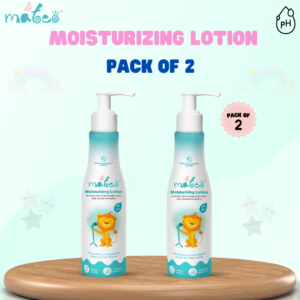
Establishing a Sleep and Nap Schedule for Your Baby: A Mother’s Guide
Table of Contents
- The Chaos of New Parenthood
- Benefits Of Proper Sleeping
- The Early Days: Surviving the Newborn Phase
- The 2-4 Month Transition
- The 6-Month Sleep Shift
- The Toddler Years: Changing Needs During This Time
- Conclusion
Are you having trouble adjusting to your irregular baby’s sleeping schedule?
Certainly one of the hardest things about being a new mother is making sure your child gets the sleep they need. Now that you have heard the advice, read the books, and visited a number of parenting sites, it is time to have a casual conversation about this topic from the perspective of a mother. Let’s begin by making your youngster a sleep and baby sleeping schedule!
The Chaos of New Parenthood
Getting a newborn to sleep may be a bit of a guessing game because they don’t arrive with an instruction manual. It doesn’t take long to understand that your infant appears to have no set routine, regardless of the time of day. They say, “Sleep when the baby sleeps,” but when exactly does it happen?
Benefits Of Proper Sleeping

It is crucial to know the benefits of proper sleeping before planning for a sleep schedule. The most essential element for a baby’s growth and development is sleep. It helps in memory consolidation, emotional regulation, and overall growth. Plus, let’s not forget, a well-rested baby is a happier baby!
Creating a Sleep-Friendly Environment:
1. A Safe and Comfy Sleep Environment:
First and foremost, make sure your baby’s sleeping place is both safe and comfy. It is advisable to have a firm, flat mattress with a fitted sheet and no loose bedding. Avoid plush animals and fluffy cushions in the cot.
2. The Temperature Shouldn’t Be Extreme Either Way.
Keep the temperature of the room between 68°F and 72°F (20°C and 22°C) to ensure your infant can sleep peacefully. Your baby should wear breathable, light layers to prevent overheating.
3. White Noise
Parental users frequently use white noise generators. By minimising disruptions from other home noises, these white noise generators contribute to creating a quiet environment.
4. Darkness
At night, make the room dark to indicate that it is time to sleep. Use curtains to reduce light.
5. Keep your baby clean.
It is crucial to take your baby bath for at least two days at a time. Use Mateo baby soap which is specifically made for kids. The baby bath helps the baby to cool and get a sound sleep. It is always advised to use baby soap that is made of moisturising elements with pH 5.5 balanced and dermatologically tested products
6. Baby Massage
Baby sleep routine can also be maintained with regular baby massage with baby massage oil. It has several benefits like improving good blood circulation, enhancing digestion, and helping sound baby sleeping.
The Early Days: Surviving the Newborn Phase
Early on, particularly in the first few weeks, it may be a bit of a free-for-all. Newborns wake up frequently because they need to eat regularly and their little stomachs can’t hold much. However, there are several things that you need to consider for better sleep.
1. Feed on Demand:
At first, your baby’s stomach is small and requires regular replenishment. Therefore, feeding as needed is the best option. Whether you choose to nurse or give your baby formula, the goal is to nourish them, not necessarily to put them to sleep.
2. Take Their Lead:
Babies frequently sleep in brief bouts. This implies that they could be awake for a time before falling asleep. Watch for signs of weariness in your infant, such as wiping their eyes, yawning, or fussiness, and respond by lulling them to sleep.
3. Day-Night disorientation:
Day-Night disorientation is a problem for many babies. Keep things vibrant during the day by using natural light and everyday home noises. Create a calm, dimly lit setting at night.
Risks Associated with Too Early baby sleeping on tummy
It’s not simply against general advice to put your baby sleeping on the tummy too early; it can also have serious repercussions.
SIDS: Although it has not been demonstrated that stomach sleeping directly contributes to SIDS, it is a risk factor during the first six months of life, when infants are particularly sensitive.
The 2-4 Month Transition:
You could start to notice changes in your baby’s sleeping habits around the two to four-month mark. At this point, you can start gradually nudging them toward a more regular sleeping routine.
1. Keep an eye out for sleep patterns:
By this stage, your infant probably has established some reliable sleep routines. Keep a casual sleep diary, and you can begin to spot patterns. Do they appear to naturally sleep longer at a particular time?
2. Establish a nightly Routine:
Now is an excellent time to begin establishing a nightly routine. Simple things like a warm bath, a song, or a bedtime tale can work. Doing the same things in the same order every night is the secret to success.
3. Encourage Longer Naps:
You could see that your child is extending their daytime naps. If so, you may nudge this along by making a peaceful sleeping environment during the day.
The 6-Month Sleep Shift:
Around 6 months, you should notice a more distinct day-night sleep pattern emerge. Your infant will be able to sleep for extended periods of time at night.
1. Nap Schedule:
As your baby develops, he or she will require less naps. By 6 months, kids may be taking two to three naps per day. Aim for a consistent nap regimen that includes both time and location.
2. Sleep Training Options:
Many mothers seek sleep training at this point. You may have heard of techniques such as “Ferberizing” or “Cry It Out.” These techniques entail gradually training your infant to self-soothe and sleep on their own. It is entirely up to you whether or not you sleep train, so do what seems best for you.
3. Encourage Longer Naps:
You could see that your child is extending their daytime naps. If so, you may nudge this along by making a peaceful sleeping environment during the day.
The Toddler Years: Changing Needs During This Time
Your baby’s sleep requirements will vary once again as they grow into toddlerhood. Here are some pointers for getting through this phase.
1. Making the Switch to a Toddler Bed:
Between the ages of 18 months and 3 years, many toddlers transition to a toddler bed. Make it an adventure fit for a large kid while making sure the new bed is secure.
2. Bedtime fights:
Your kid can start to resist going to bed. Maintain your routine and console them if they suffer nightmares or a fear of the dark.
3. Toddler night awakenings:
These can occur. However, keep in mind that they could only want reassurance and a reassuring presence. Check for any discomfort or disease.
Also Read our Blog: How Do I Take Care Of My Baby’s Skin?
Conclusion
You know, it can kind of seem like trial and error getting your little one into a regular sleep and nap schedule. You need a lot of patience to adapt yourself to the sleeping routine. Trust your instincts as a caretaker, keep a careful watch on your child, and don’t forget that getting a good night’s sleep is quite possible. In the future, when you reflect back on this difficult time, you’ll find that you not only survived it but also developed into an even more tenacious and loving mother. Your patience and love towards your little one help you develop a healthy family.

Nivethitha Sridharan
Nivethitha is a mother of two children and has a great interest in writing as an experienced mother. She publishes educational and interesting articles on baby care and also assists parents in selecting the finest baby products for their baby’s skin and well-being. She focuses on infant skin care and health issues. She also provides suggestions and guidance on baby care and avoids common skin disorders in newborns. Nivethitha likes studying and writing about new and innovative ideas that might assist people in finding solutions to their problems. She feels that content writing is an effective means of communicating thoughts and information to the world.
-
Mateo Baby Cleansing Bar – 75gm (Pack of 3)
₹555.00Add to cart -
Mateo Baby Massage Oil – 100ml (Pack of 3)
₹585.00Add to cart -
Mateo Baby Moisturizing Lotion – 200ml (Pack of 2)
₹700.00Add to cart -
Mateo Baby Rashfree Cream – 60g (Pack of 3)
₹540.00Add to cart -
Mateo Baby Shampoo
₹395.00Add to cart -
Mateo Baby Shampoo – 200 ml (Pack of 2)
₹790.00Add to cart -
Mateo Baby Shampoo and Mateo Massage Oil(Combo Pack)
₹590.00Add to cart -
Mateo Baby Shampoo and Mateo Rashfree Cream(Combo Pack)
₹575.00Add to cart









